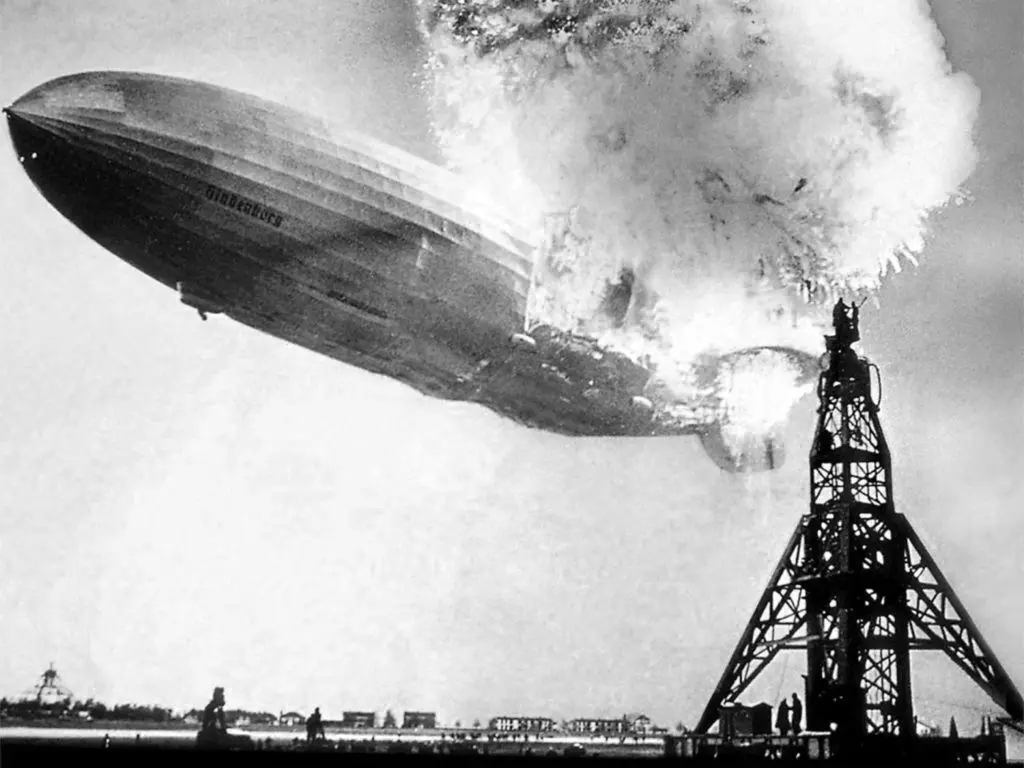On this day in 1937, tragedy struck the skies over Lakehurst, New Jersey, as the mighty German dirigible Hindenburg met a fiery demise during its first transatlantic crossing of the year. The Hindenburg, a symbol of technological innovation and luxury air travel, was the largest airship of its time, measuring a staggering 804 feet in length and boasting luxurious amenities for its passengers.
The ill-fated journey of the Hindenburg began on May 3, 1937, as it embarked on its first transatlantic voyage of the year from Frankfurt, Germany, to Lakehurst, New Jersey. The airship, carrying 97 passengers and crew members, including journalists, photographers, and dignitaries, was scheduled to complete its journey in just three days, a testament to the speed and efficiency of air travel in the 1930s.
However, as the Hindenburg approached its landing site at Naval Air Station Lakehurst on the evening of May 6, disaster struck. Witnesses on the ground reported seeing flames erupt from the tail of the airship, quickly engulfing the massive hydrogen-filled envelope in a towering inferno. Within minutes, the Hindenburg was reduced to a twisted wreck, its once-proud frame consumed by flames.
The cause of the Hindenburg disaster remains the subject of much debate and speculation to this day. While some theories suggest that the airship was brought down by a static spark igniting the highly flammable hydrogen gas used to inflate its envelope, others point to sabotage or structural failure as possible causes. Despite numerous investigations and inquiries, no definitive conclusion has ever been reached.
Tragically, the Hindenburg disaster claimed the lives of 36 of the 97 persons on board, including passengers and crew members. The harrowing scenes of destruction and chaos witnessed that fateful day left an indelible mark on the history of aviation and signaled the end of the era of passenger airships.
In the aftermath of the Hindenburg disaster, public confidence in airship travel was shattered, and the era of the rigid airship came to an abrupt and ignominious end. The once-glamorous vision of luxury air travel aboard majestic dirigibles was replaced by the grim reality of the dangers posed by these giant, gas-filled behemoths.
Despite its tragic end, the Hindenburg remains a symbol of both the triumphs and tragedies of human ingenuity and ambition. From its spectacular maiden voyage to its fiery demise, the story of the Hindenburg serves as a poignant reminder of the fragility of human achievement and the perils of pushing the boundaries of technology.
Today, the site of the Hindenburg disaster at Naval Air Station Lakehurst is marked by a memorial that pays tribute to the lives lost on that fateful day in 1937. Though the flames that consumed the Hindenburg have long since been extinguished, the memory of the disaster continues to loom large in the annals of aviation history, serving as a cautionary tale for generations to come.












Bruce Dannelly
I was told by my grandmother that the smoke could be seen from the 2nd floor of our house in Tuckerton.